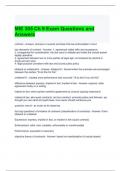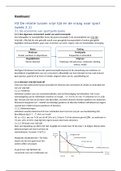Summary
Summary - Forensic Psychology (FSWP-K-3-10)
- Course
- Institution
This is a summary of all the necessary reading for the elective course; Forensic Psychology. All information form the articles is provided in detail. Sections of the reading that was not relevant (according to the course coordinator) is either left out, or it is mentioned in the summary. The lectu...
[Show more]












